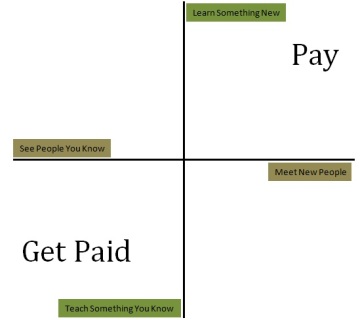I was asked recently to coach some young leaders on public speaking. I am looking forward to the exercise. I love to speak, and talking about speaking is about as fun as things can get. It should be a good opportunity to capture some thoughts on public speaking -- and I will do my best to post them here.
The Frame
The curse of knowing a subject well leads many public speakers to neglect to frame the subject. We all want to jump right in and get to the main point and supporting evidence, but those points will be lost without a good framing statement. A good framing statement should be one tight sentence that orients the audience. It should be strong enough to bring even the most distracted listener into your universe. It does not have to make your argument or seal the deal. After hearing the framing statement your listener knows what you are going to talk about. This is the first Tell in the Tell, Tell, Tell speaking structure.
Here are some examples of framing statements for some common speeches:
- On a book you wrote: I did not know that I was changing my life when I wrote the first page of my book fourteen years ago.
- On a trip you took: Mount McKinley is obscured by clouds 345 days of the year.
- On a company you started: Like many entrepreneurs, I started my company because I wanted to be the first customer.
- On a cause you support: Of 100 students entering high school in the Seattle Public School system, only 2 of graduate from college.
No matter how well oriented your audience was when they decided to attend your talk, at least half of them will have forgotten their own reason by the time you start to talk. So take a second to give them a good framing sentence. You just want them to think 'oh right, this is the guy that started that company'; or 'OK, we are talking about education'.
There are as many flavors of this as there are speakers, and you want your framing statement to fit your style and your situation. If you are leading a meeting you could say "This meeting is about..." If you are giving a sales presentation you could say "We are here today to present our solution to your..." If you were introduced at the podium you may need to pull people back from momentum established in the content of your bio by saying "Even though my day job is as a lawyer, I am here to speak to you today about..."
Using jokes as to frame your subject is tricky. It can be great because loosening up your audience with a joke is great fun. However if you go that route, you have to realize that you will both have to be funny and do it in the context of your subject. A funny joke that propels your audience in the wrong direction is probably not going to get you where you want to go.
Using a rhetorical question is also complicated. If you do, make sure to answer it right away -- say in the next sentence. Unresolved items like that can chew up the brain power of your audience and distract them within the presentation.
Step one of your speech should always be to get your audience into the frame with a good framing statement.
